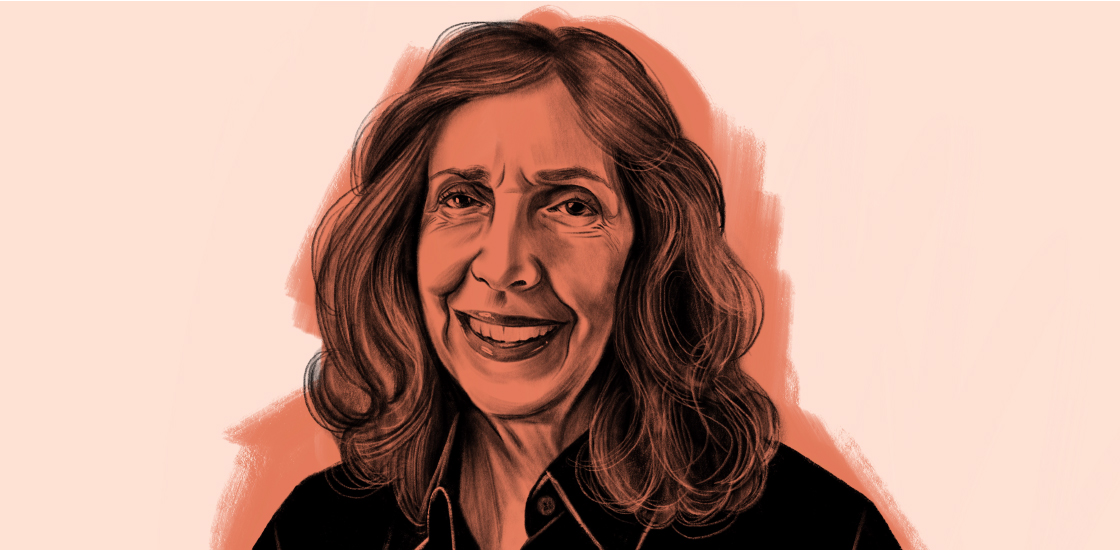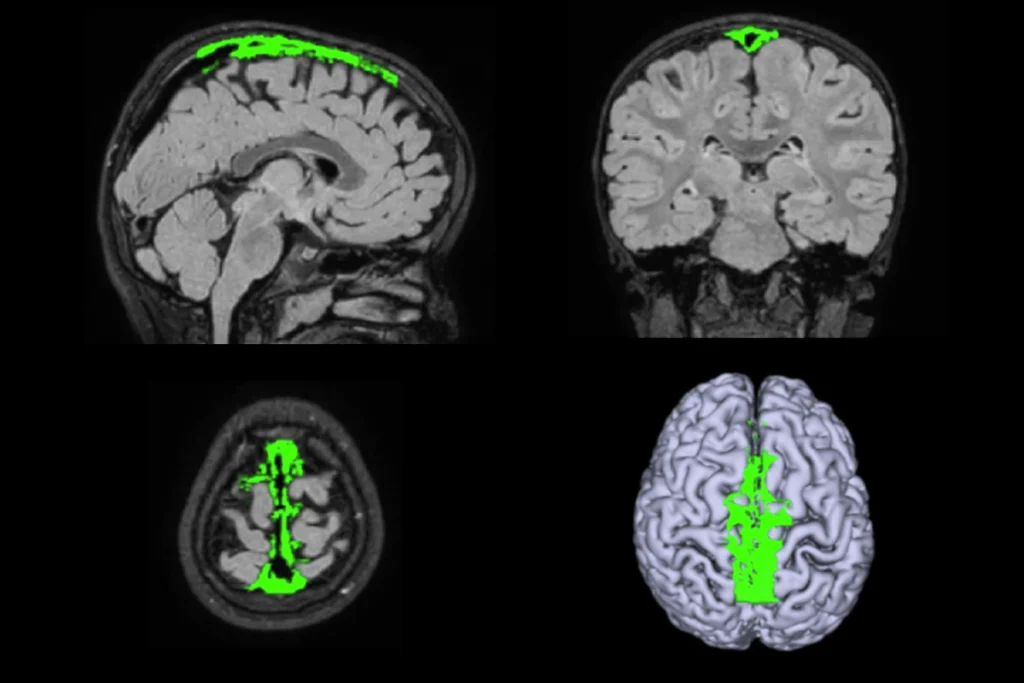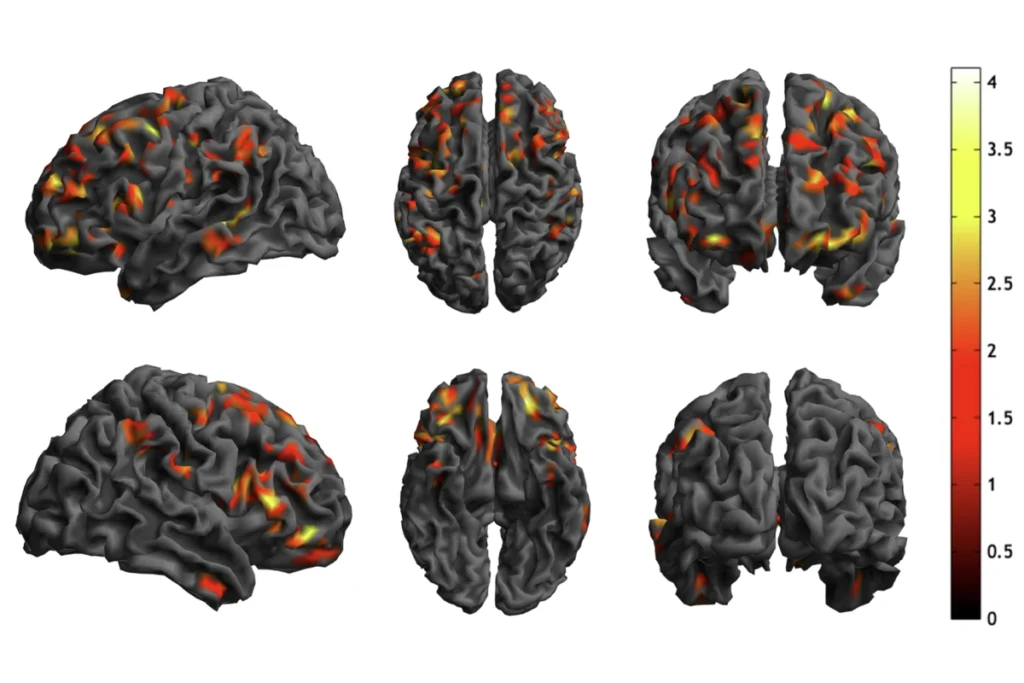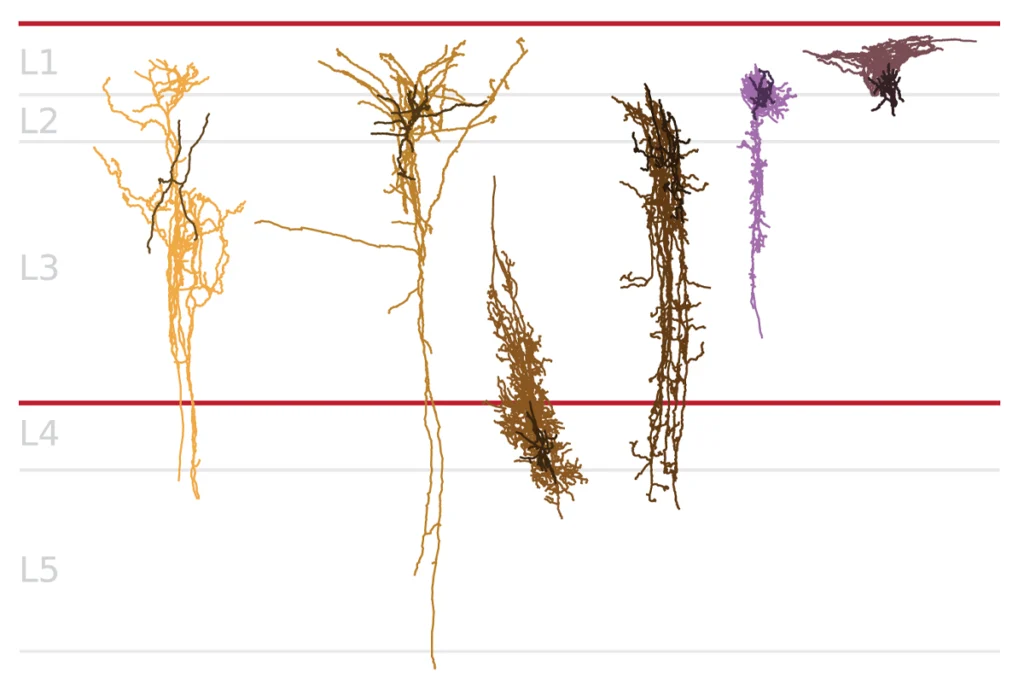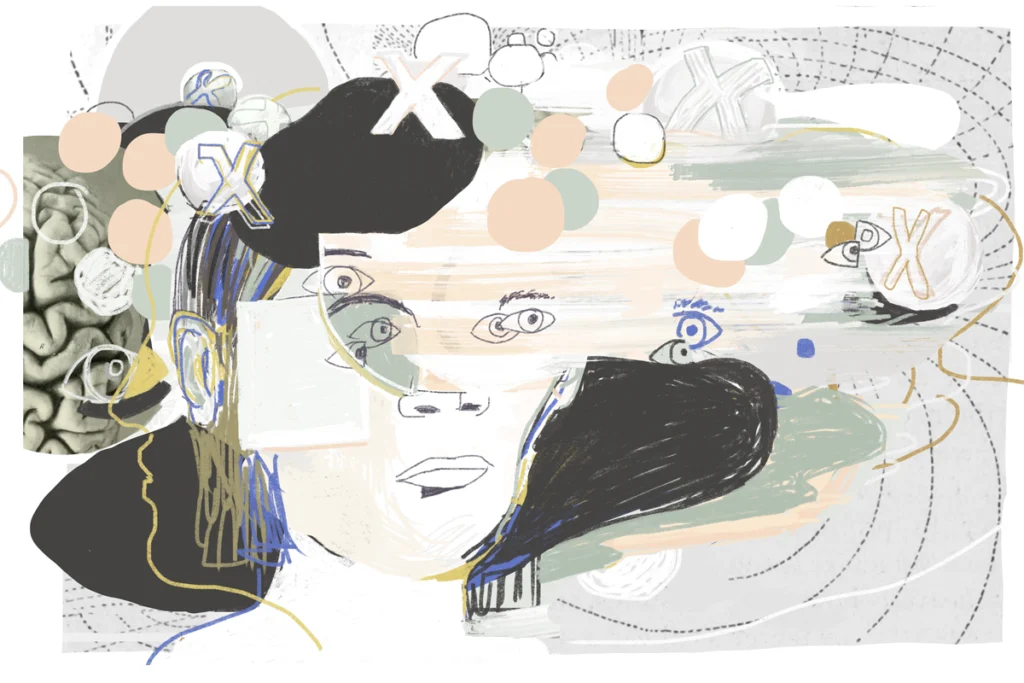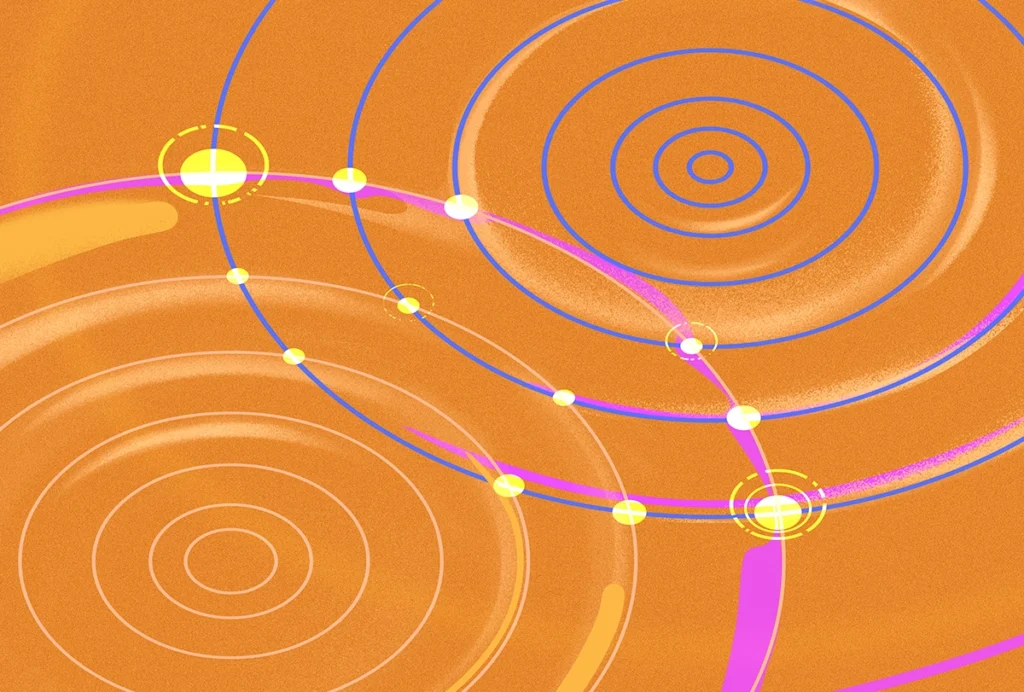In 2020, Amy Wetherby became a grandmother. Like many doting grandparents, she treasured every update about and photo of her granddaughter, even as the COVID-19 pandemic made in-person visits impossible.
The baby girl was beautiful, bright eyed and smiley — but she slept poorly and had trouble nursing. At 6 months, she showed slight motor delays. She struggled to sit upright, which prompted her doctor to prescribe physical therapy.
When Wetherby’s daughter, Becca Wetherby, looks back at that time, she acknowledges how she just wanted to get past these difficulties so she could savor this early phase of motherhood. “Being a first-time parent, I was so overwhelmed,” says Becca, who asked that her daughter’s name be withheld.
But Wetherby worried her granddaughter needed additional support — urgently. She pressed her daughter to pursue autism screening. “At 6 months, you should have robust shared attention and gaze shifts,” says Wetherby, who is a speech-language pathologist by training, distinguished research professor in clinical sciences at Florida State University in Tallahassee and director of the university’s Autism Institute. “She had that, and then she started losing it … I could see it diminishing.”
Wetherby pointed her daughter to Baby Navigator, a website she had co-created to help parents learn about early speech and communication development. A screening tool on the site suggested the baby had 10 signs linked to autism.
The baby’s doctor told Becca they did not see any such signs. But Wetherby and her colleagues at the Autism Institute were insistent: Time was of the essence. Early intervention, they argued, could be profoundly beneficial. So when her child was just 10 months old, Becca enrolled in a program Wetherby had pioneered to coach parents to support their child’s early speech and language development.
Today, both women are convinced this choice made a critical difference for the little girl, who was diagnosed with autism last year at 24 months of age. Her motor skills are now within the typical range, and her language skills are two standard deviations above average. “She aced the Mullen expressive language scale,” Wetherby says proudly, referring to an assessment of early socialization and communication abilities.
When Wetherby talks about her granddaughter, she lingers on how easily the child’s autism could have been missed. Too many physicians overlook the earliest signs of this condition or take a “let’s wait and see” attitude toward children who show early delays, she says. Despite the American Academy of Pediatrics’ recommendation that all children undergo autism screening at 18 and 24 months, the median age at diagnosis remains about 4 years in the United States. It’s even older for children from minority, low-income or rural families.
“Going earlier is at the heart of what we do,” says Wetherby, who — over the past four-plus decades — has helped create tools aimed at early detection and intervention for researchers, clinicians and parents.
“Amy wants to do world-changing stuff … to better everything and take on the system,” says Abigail Delehanty, assistant professor of speech-language pathology at Duquesne University in Pittsburgh, Pennsylvania, who did her doctoral work under Wetherby’s supervision. Those goals come with “a deep sense of wanting to move innovation along faster,” adds Jennifer Stapel-Wax, professor in the pediatrics department at Emory University School of Medicine in Atlanta, Georgia, and a long-time collaborator with the Autism Institute.
“In the first two years of life, babies are forming 1 million synaptic connections per second. And this is happening every second that you ‘wait and see,’” Wetherby says. “My mission is to stop this [attitude].”
W
etherby has long had a talent for identifying a person’s needs before others do. Growing up, she had an older cousin with what would likely be recognized as profound autism today. She would observe his interactions and watch the dynamics between family members. She found herself empathizing with him, noting how he could not communicate verbally but tried to find other ways to interact.She became adept at noticing patterns in his behavior that could help her decode his intentions. She recognized, for instance, that certain activities were too difficult for him — such as choosing what food to eat — and if an adult put him in those situations, he could become upset. “I was really the only one that could babysit him,” she recalls.
Years later, when Wetherby went to college at the University at Buffalo in New York in 1973, she was confident that she would head to medical school next. But during the second semester of her first year, an accident shifted the trajectory of her career. One Thursday evening, she opted to stay in her dorm rather than go to a concert with her boyfriend and some of his friends. “I had an 8 a.m. class Friday morning, and I just said, ‘Oh, I really need to go to bed early.’ But I should have been there,” she says.
Her boyfriend and his friends did not come back to campus that night. Instead, the driver, who had been drinking, got into a car accident. His vehicle wrapped around a tree, trapping Wetherby’s boyfriend in the backseat. Though her boyfriend survived, a car door was embedded in his leg, and he sustained a serious head injury. He was hospitalized in a coma.
Wetherby went daily to see him in the hospital. When he was later relocated to a facility closer to his family, she flew to see him. On one visit, about two months after the accident, she remembers putting a hand on her boyfriend’s shoulder. He turned slightly to kiss it. In that moment, she knew he was no longer in a coma — but his doctors didn’t see it and didn’t believe her.
Never one to wait to act, Wetherby decided to prove to the doctors that her boyfriend had regained consciousness. She happened to be taking an introduction to communication disorders class that same semester. She described the situation to her instructor, who guided her in applying lessons from the course to her situation. Though her boyfriend couldn’t speak, she taught him to respond to her questions with tongue clicks — once for yes, twice for no. That demonstration convinced his physician that her boyfriend was conscious and trying to communicate.
Wetherby’s boyfriend had a hard road ahead. The pair broke up when he moved away for rehabilitation. In retrospect, Wetherby says, he distanced himself from many of his friends at that time. Still, they stayed in touch. After four years of rehabilitation, though he remained quadriplegic, he went back to school and graduated from Cornell University.
Wetherby, meanwhile, was drawn in a new direction. “That entire experience energized me with this realization of, ‘Wow, what a difference communication makes,’” Wetherby says. She pursued a Ph.D. in speech and hearing sciences through a joint program at the University of California, San Francisco and the University of California, Santa Barbara.
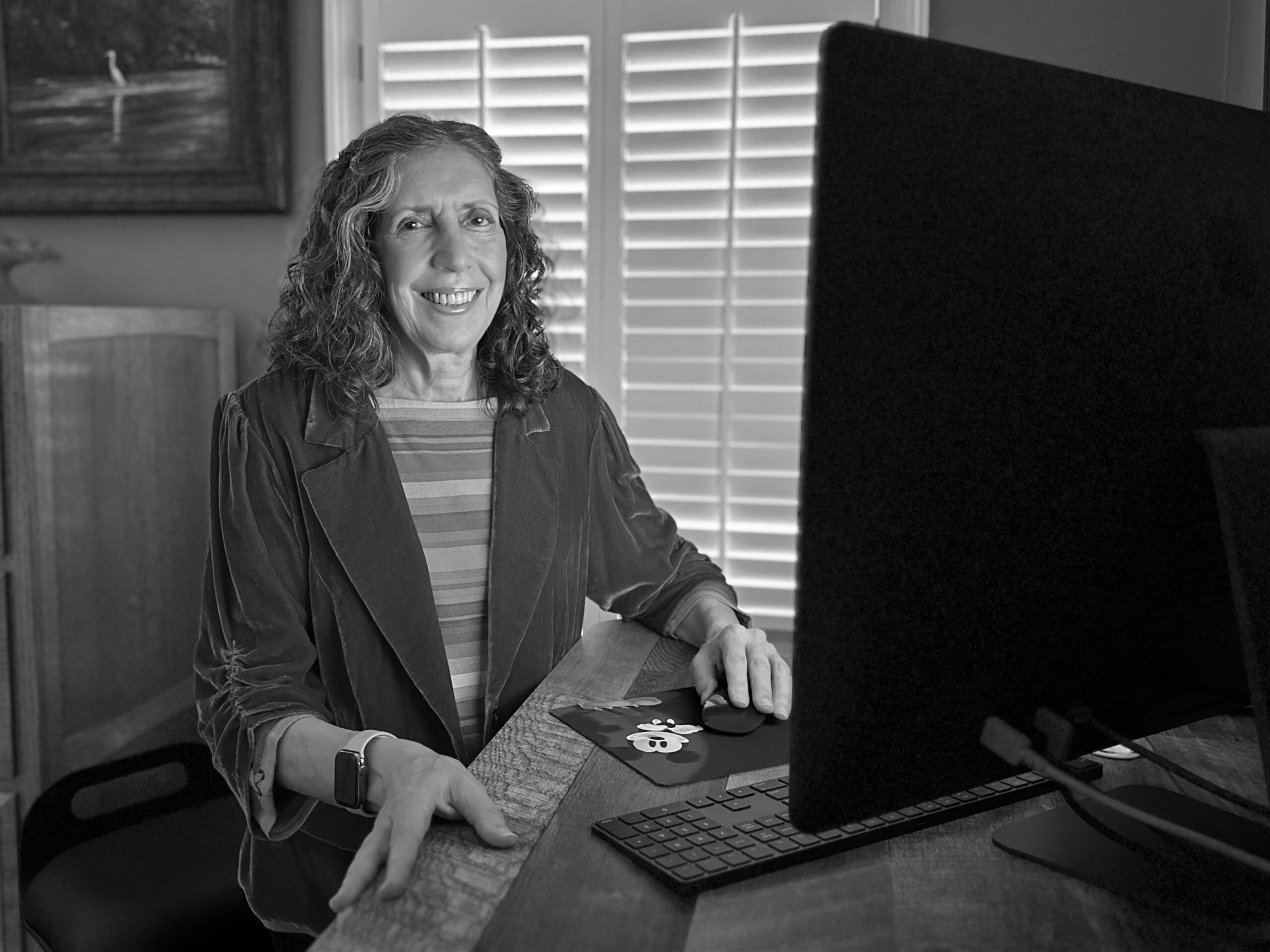
A
s a graduate student in the late 1970s and early ’80s, Wetherby witnessed a tremendous transformation in the field of child language development. New ways of thinking about and observing communication, for example, began to shift how people thought about interaction in autism and other conditions. As a speech-language pathologist, Wetherby was one of the first to apply these kinds of insights to autism research.In 1983, Wetherby joined the faculty at Florida State University and has been there ever since. Among her early contributions was the Communication and Symbolic Behavior Scales (CSBS), which offered a new approach for assessing autism in children. The CSBS was the first standardized tool for studying the skills that underlie the development of communication abilities, such as joint attention and the use of gestures.
“It was very helpful for the field,” says Geraldine Dawson, director of the Duke Center for Autism and Brain Development in Durham, North Carolina. “I used that tool in a number of studies and found it very, very effective.”
Wetherby has also spent more than 20 years studying and refining the Early Social Intervention (ESI) treatment model, which she co-created with a colleague. This approach emphasizes coaching parents to teach them strategies that support their child’s communication and language skills.
ESI is one of the few interventions of its kind to show significant results for children in multiple contexts, says Dawson, who co-developed her own parent-coaching intervention, the Early Start Denver Model. “Amy’s work is quite impressive in that regard,” she says. Children who received an individualized ESI intervention at 18 months showed greater gains — including improved language and communication skills — than those in a group ESI intervention or those who began the same intervention at 27 months, according to a study published in March.
These and other projects support Wetherby’s larger vision to recognize and treat children with autism early. But there is one other component that Wetherby says is critical. For the research community’s work to have a practical effect as soon as possible, it needs to be translated for non-scientists. To that end, Wetherby has created two public-facing online programs: Baby Navigator and Autism Navigator.
The programs use courses, videos and written materials to translate scientific findings about early language development and autism, respectively. “That work is so important,” says Catherine Lord, distinguished professor of psychiatry and education at the University of California, Los Angeles, who has collaborated on Wetherby’s ESI research for many years and says she admires how the Navigator programs help parents understand their children’s development.
The sites can also help clinicians. An eight-hour class, provided through Autism Navigator, helped lower the age of referral for autism diagnosis at a pediatric office from about 36 months, on average, to 20 months, Wetherby and her colleagues found in 2020.
D
espite being someone who has made her name for taking action early, these days Wetherby sometimes finds herself running behind schedule. As director of five lines of research at an institute with 81 full- or part-time employees, Wetherby has a packed schedule. Her days are booked from 11 a.m. until well past midnight with team meetings, webinars, reading and grant writing. “I try to get at least three to five hours of sleep,” Wetherby says. “If I get five, then I’m doing good.”She knows that she is over-committed. “I’m late on everything, because I have too much and I don’t know what to get rid of,” she says. But she is careful to protect certain windows, including her daily news and dinner break, which she spends with her husband, fine artist Dean Gioia. “He anchors me, and I anchor him,” she says.
Finding space on her work calendar can be a challenge, says Delehanty, who connects monthly with Wetherby and recognizes that “the person that she’s meeting with right in front of her is just one tiny cog in a huge clock that continues ticking.”
Once connected, though, Wetherby takes her time. “She’s very detail oriented. She wants it to be right the first time. The flip side is that you have to be willing to wait her out, because she wants to get it right,” Stapel-Wax says.
And yet Wetherby’s sense of urgency about her work is ever-present. If colleagues miss the mark or move too slowly, for instance, they can feel the weight of letting Wetherby down and holding back her larger mission, Delehanty says.
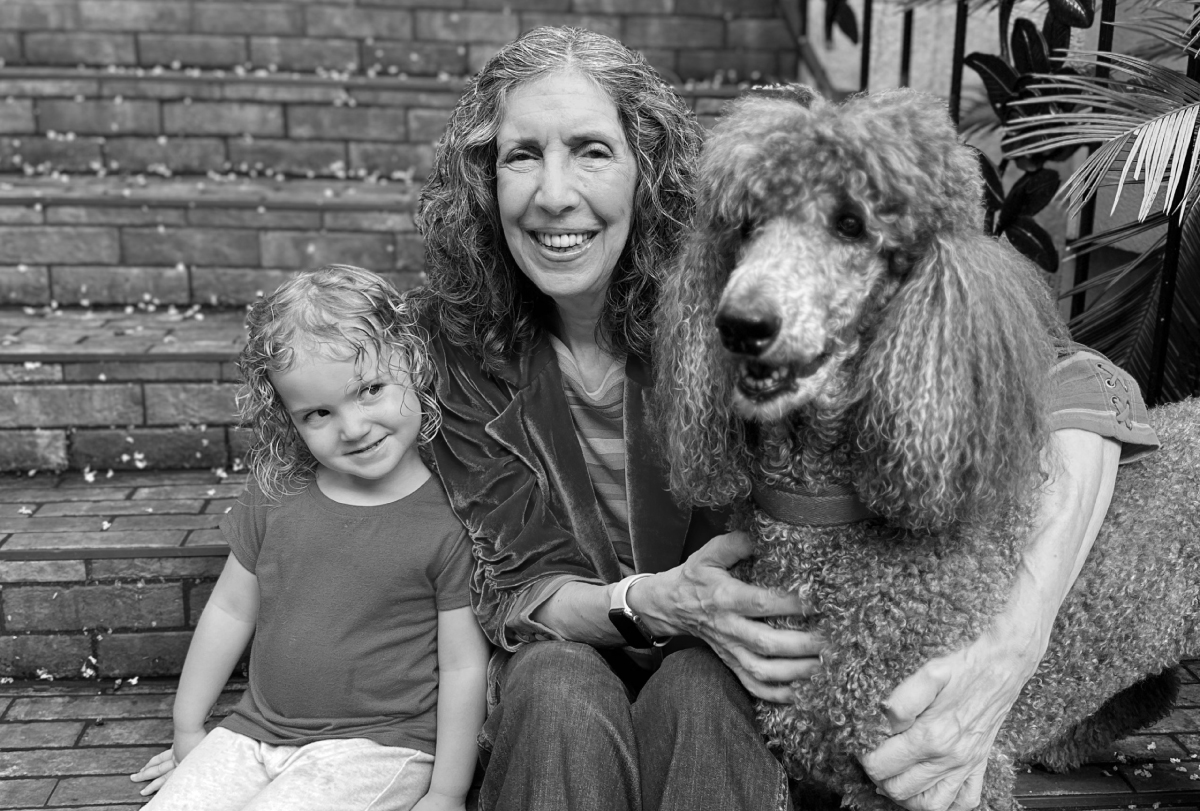
Indeed, being part of a team that is making significant changes to how autism is identified and treated has propelled Wetherby’s collaborators and kept many dedicated to the effort for decades. “Amy’s always had these big ideas — and she’s gotten us there,” says Laura Rosenthal, lead research coordinator at the Autism Institute, where she has worked since its establishment in 2008.
For instance, the institute’s intervention-focused team began with a Tallahassee-area emphasis and gradually expanded to include families across Florida and other states, Rosenthal says. Today, thanks to the growth of the Navigator programs, the team has worked with families around the world. That’s because families that use those websites for screening can go on to work with diagnosticians and interventionists in the ESI program — as was the case for Wetherby’s daughter and granddaughter, now 3 years old.
B
ecca says the ESI program helped her recognize autism traits in her daughter and master techniques to bolster her child’s social and communication abilities. For example, she learned to withhold certain reactions until her daughter has made eye contact, rewarding the child for that added social exchange.Her only regret is not enrolling sooner. “I wish I’d started at 6 months,” she says.
There are still challenges. The little girl’s social and communication skills can decline when she is interacting with unfamiliar people, particularly her peers. That pattern may underscore the limits of an intervention focused on parent-child interactions — though, with practice, she is gradually improving in these areas, too.
Wetherby, meanwhile, is thrilled to see how the intervention she and her colleagues developed has benefited two generations of her own family. “It’s amazing to see how far she’s come,” Wetherby says. “And it’s not like she got special treatment. This is what we have to offer.”
Wetherby adds that the Navigator programs are growing steadily each year, with about 5,000 new families joining annually. “But we’re ready to scale up,” she insists. In parallel, she is excited to share that her ESI team has begun more expansive studies with children aged 9 months and up.
With more research, she believes they could have a clearer picture of critical windows in early development. The catch, of course, is that this work takes time. “Science is so slow,” Wetherby says. “I wish we could figure out a way to do things faster.”
